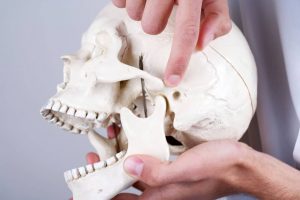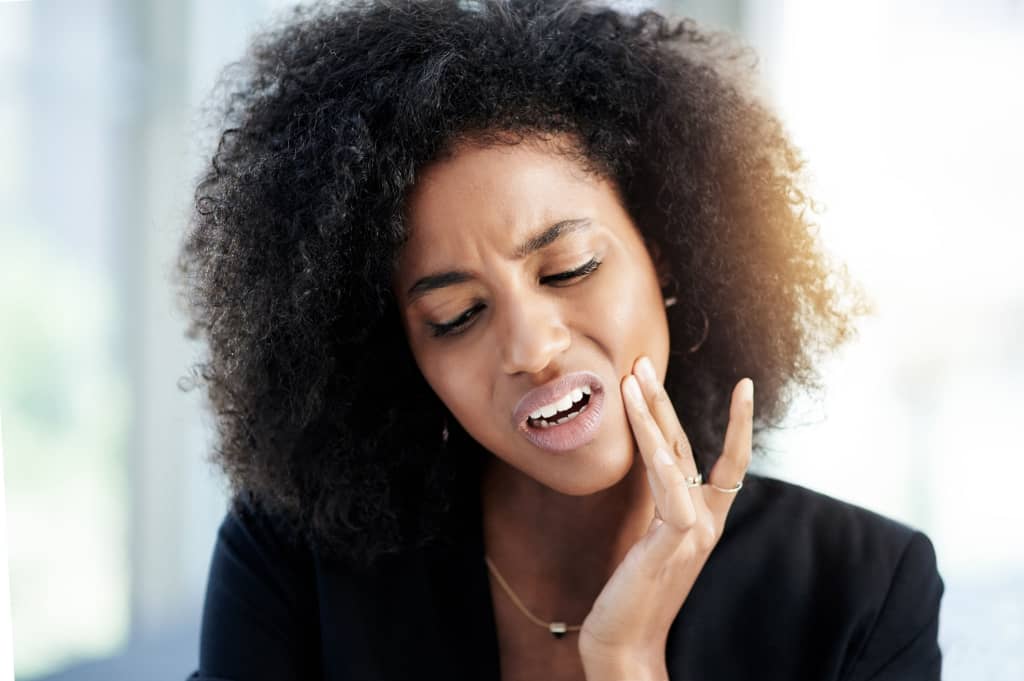Jaw Pain And Headache: Symptoms of TMJ
In extreme situations, discomfort from Jaw Pain And Headache might be linked to some places in your body such as your back, shoulders, arms, and hands. It is possible to even miss work or social activities due to the kind of pain you are experiencing.
However, in many circumstances, a certain type of dental therapy can be helpful. Headaches are usually attributed to a variety of factors, including stress and hormones.
Headache patients frequently go from doctor to doctor and specialist to specialist, with little or no relief. Heavy pain relievers are administered, but these drugs just address the symptoms, not the underlying problem.
Unfortunately, conventional medicine rarely diagnoses a patient with a temporomandibular joint (TMJ) condition or syndrome, which is the underlying source of the problem. It is the second most prevalent cause of persistent pain. It makes eating and talking difficult, if not impossible, and it frequently causes jaw pain and headaches.
You’ll keep treating a headache if your TMJ is misdiagnosed as a common headache.
You may feel better for a while, but the pain will return if the root of the problem isn’t treated. In the early 1980s, the dental profession became aware of temporomandibular joint disorder.
Jaw Pain And Headache Causes
There are various points to be made about the causes of jaw pain such as:
● Clenching the jaws suddenly in anger or when chewing something. This is because clenching places undue strain on the flexible and soft joints, as well as tight muscles in the cheeks, jaw, and neck.
● Sleeping on your stomach pulls your head to one side, causing tight muscles and jaw strain.
● The ball and socket that hold the joint in place can sometimes move out of their regular locations, causing the jaw to open and close unevenly.
● Chewing gum – chewing gum puts a constant strain on your jaw joint and muscles if your jaw ball and socket are not properly aligned. If you have jaw difficulties, avoid chewing gum.
● When you eat certain foods, such as a jawbreaker or stick-jaw candies, your jaws may open or close improperly, putting a lot of tension on your TMJ, resulting in lock-jaw. Our natural reaction is to open our mouths, which might further injure the TMJ.
It is essential to tackle the causes of jaw pains and headaches at the first signs.

What is TMJ?
The temporomandibular joint is abbreviated as TMJ. Your temporomandibular joints are placed immediately in front of your ears, just below the ears on both sides of your face.
The TMJs are the joints that link your lower jawbone to your skull and help you chew and speak. Tendons, ligaments, and muscles connect your lower jaw to your upper jaw in this joint. Imran Patel, DMD, a dental sleep medicine specialist at Banner – University Medical Center Tucson, explained that TMJ helps you move your lower jaw when you eat, talk, yawn, and occasionally when you breathe.
TMJ problems can occur from time to time. If this is the case, you may get jaw pains and headaches from time to time. This is because the nerve that causes pain in your outer skull also has access to your TMJ.
Your TMJ condition could create nerve hypersensitivity, causing pain to spread to other parts of the nerve.
Many individuals interchange the terms TMJ and TMD. However, Temporomandibular joint disease (TMD) is a condition that affects the jaw joint. Although, any TMJ problem or disorder is referred to as this.
What You Should Know About TMJ
You have two temporomandibular joints in front of your ears, one on each side of your head. These joints link your jaw to your skull and allow you to move your mouth in different ways for swallowing, talking, and yawning.
The disorder of TMJ is simple, it happens when the jaw is slightly dislocated and this causes jaw pain and headache.
If the patient hears a clicking sound when opening and closing his mouth, or if he can touch his fingers on the side of his face where the jaw bones meet and feel a small “bump” as the jaw opens, TMJ dentists will usually diagnose the patient of TMJ.
Causes of TMJ
TMJ disorders affect the jaw joint and the muscles that control its movement, causing severe jaw pain and headache. The following are common causes of the problem:
● Jaw misalignment as a result of dental misalignment
● Wear and tear on the cartilage (arthritis in the jaw joint). This is a painful condition
● Injury to the joint’s bones or surrounding tissues
● Muscle damage from overuse
● Teeth grinding or clenching which causes pressure (Bruxism). Dr Patel says, teeth grinding happens in your sleep while teeth clenching happens during the day
● Knots in muscles
● As a result of trauma, such as a fall, being elbowed playing sports, and also being slapped in the face Stress
● Acute injury to the jaw
● An erroneous bite
All of these problems cause inflammation or pain in the temporomandibular joint, making it difficult to move your jawbone properly.

Common Symptoms of TMJ
TMJ dysfunction is most prevalent in those aged 20 to 40, and it affects women more than males. The following are some of the most prominent TMJ symptoms:
● Jaw pain
● Headaches
● Earaches when you open your jaw or mouth
● When antibiotics are not working for your earaches
● Neck pain in the back or on the sides
● Shoulder discomfort
● Opening your mouth wide is difficult
● When you open your mouth, you tend to move your jaw to one side instead of straight down
● Chewing is difficult
● Tinnitus is a ringing in the ears condition
● Changes in the positioning of your teeth
● The side of your face is swollen
● Toothache that is not related to a dental issue
● Jaws that “lock” in either in an open or closed-mouth position
● When you open or close your mouth, you may hear a clicking, cracking, or grating sounds in the jaw joint
● You get a fatigued expression on your face.
Also, other types of headaches such as migraines and tension headaches, are related to TMJ pain. As a result, treating TMJ pain may help to reduce the severity of these headaches.
When you have consistent jaw pains and headaches, it’s essential to schedule an appointment with your dentist for a complete examination to diagnose the root of your discomfort.
How to prevent TMJ problems
If you’ve been told that specific treatment can identify the development of temporomandibular joint syndrome, you should reconsider. In truth, there is currently no evidence that such a thing exists. It’s partly because you can’t tell if you’re gradually developing the illness. Many TMJ issues emerge gradually over time.
Its symptoms are so similar to those of other illnesses that you will never notice it when it first appears.
However, if you probably notice any early warning signs of these, you might want to seek medical advice to prevent TMJ disorder.
● Teeth grinding or clenching
● Headaches in the morning
● A feeling as if your ears are about to pop or ringing
● You feel your jaw clench
● You’re unable to open your mouth fully
● When chewing, you may experience pain after a time
Relationship Between TMJ and Headache
TMJ-related jaw pain and headache are frequently confused with tension or migraine.
TMJ headaches were misdiagnosed as tension headaches in 31% of patients in one research.
It is so simple to mix the two up because muscles connect the jaw joint to your head.
A large, fan-shaped muscle covers each side of your head and is one of the key muscles that move your jaw. Your cheeks also have muscles that are connected to the temporomandibular joint. Because of difficulties with your jaw joints, these muscles become stiff, knotted, or injured, putting a lot of stress on your head and causing headaches.
TMJ and headaches are affected by the way your teeth connect when you bite down.
Stress is put on the jaw when you have uneven teeth that cause an unequal bite. The stress can sometimes be enough to throw the joints out of position.
This uneven stress and movement in your jaw joint affect your muscles, resulting in headaches.
PEOPLE ALSO READ; THE EASIEST WAY TO WHITEN YOUR TEETH
How is TMJ diagnosed?
TMJ dysfunction is usually discovered during a dental examination. Your medical professional will pay attention when you open and close your mouth to examine the range of motion. To find areas of discomfort, the dentist will press on your face and jaw.
Also, the dentist will feel around your jaw joints as you open and close your mouth.
Radiographs (X-rays) may also be used to examine the jaw joints and identify the amount of damage. Some examples are:
● Panoramic Radiography-
This is also known as Panoramic X-ray. This dental X-ray provides a full image of your teeth, jawbone, and TMJs.
● Scanning with CBCT-
CBCT scans produce thousands of images of your teeth, jaws, facial bones, and sinuses. After that, the images are stitched together to create a clear 3-D image.
Dental CT scans provide a more broad view of your facial anatomy to your healthcare provider.
● MRI examinations –
Magnetic resonance imaging (MRI) may be used to examine soft tissues in and around the jaw joints in exceptional conditions. The location of the disk, inflammation and probable jaw locking are all visible in these photos. This can show your healthcare professional if the TMJ disc is strong and operating appropriately.
For more care and treatment, you may be sent to a specialist. TMJ dysfunction is treated by an oral maxillofacial surgeon who specializes in skeletal disorders.
How to Treat TMJ
According to Dr Patel, “combining different treatment methods can eliminate jaw pain and headaches far faster than a single approach.” Treatments range from simple self-care practices and conservative treatments to injections and open surgery. Most experts agree that treatment should begin with a conservative, non-surgical procedure, with surgery left as the last resort.
Some of the TMJ treatment methods are:
Nonsurgical Procedure
If you’ve been diagnosed with TMJ dysfunction, your doctor will most likely start with conservative and non-surgical therapy methods.
1. Using Splints or a nightguard.
They are mouthpieces that are worn over the top or bottom teeth. You can wear them to help relax your joint and rest your muscles at night. The mouthpieces provide solid tooth contacts during closure when they are worn. They also improve your bite by shifting your jaw into a better posture. The primary distinction between splints and nightguards is that nightguards are only worn at night, whereas splints are worn all day.
The type of mouthpiece you require is usually determined by your healthcare provider.
2. Use moist heat or cold packs with exercises to relieve pain.
For acute pain, apply an ice pack to the side of your face and head region for around 10 minutes. Then perform simple jaw stretching exercises as instructed by your doctor.
Apply a warm towel or washcloth to the side of your face for five minutes after exercising. You can do this several times every day.
3. Maintain Soft Food Diet
Eat soft foods like quinoa, tofu, soft chicken, mashed potatoes and gravy, scrambled eggs, fish, cooked fruits and vegetables, beans, macaroni and cheese, soups, and meatloaves to prevent your jaw from working overtime. Hard rolls, pretzels, tough cuts of meat, escargot, raw carrots, and chewy foods like caramels and taffy should all be avoided. Also, avoid chewing gum. Reduce starchy foods including wheat, dairy, sugar, yeast, jams, jellies, and preservatives, especially MSG, to protect your joints.
4. Excessive jaw movements should be avoided such as:
● Minimize yawning and chewing.
● Holding the phone between your shoulder and ear should be avoided.
● Don’t put your chin on your hand.
● Reduce neck and facial pain by practising excellent posture.
● Keep your teeth slightly apart as much as possible to ease jaw pain. Place your tongue on the palate behind your upper front teeth to prevent clenching or grinding during the day.
● To manage muscle tension in the jaw, learn relaxation techniques:
Other alternatives for treatment may include:
● Medication administration
● Corrective dental therapy is being performed.
● Muscle relaxants on prescription and topical creams
● Ultrasound
● Radio wave therapy
Jaw pains and headaches may not appear to be a major issue when they don’t occur frequently. TMJ dysfunction, on the other hand, if left untreated, can severely impair daily functions including biting, chewing, and speaking. Call your dentist if you suspect you have TMJ symptoms
